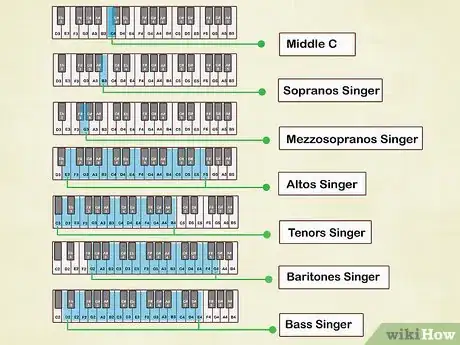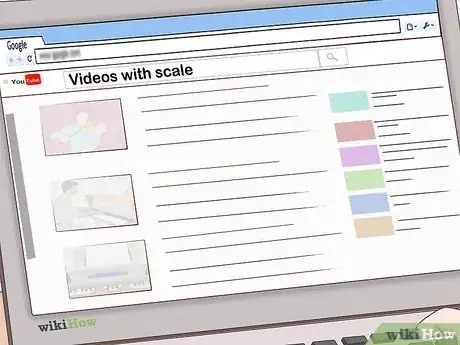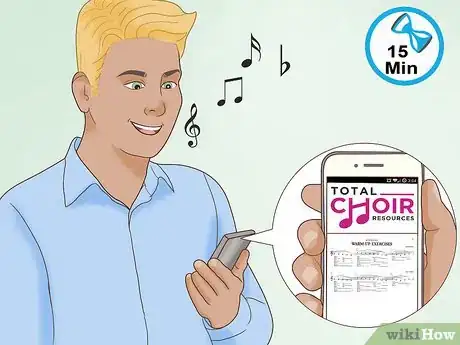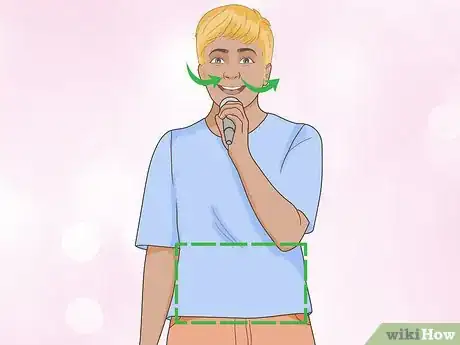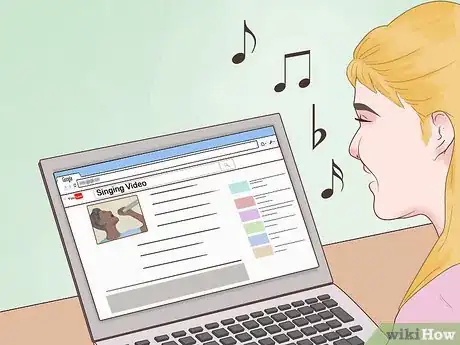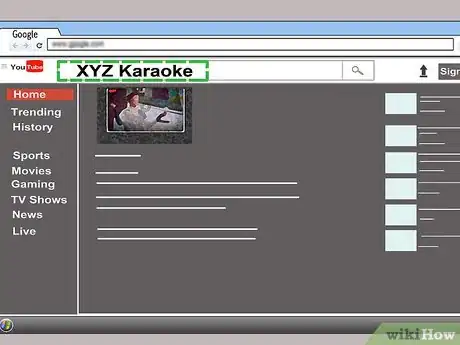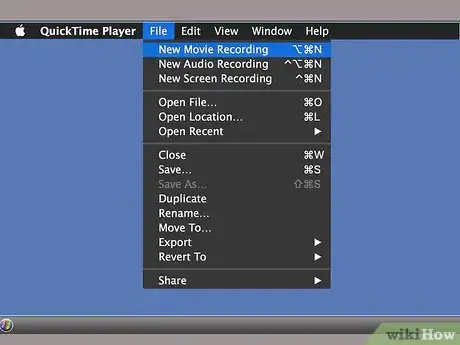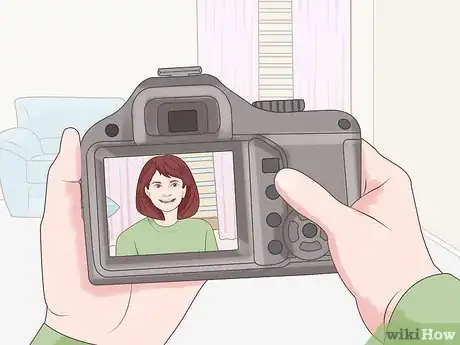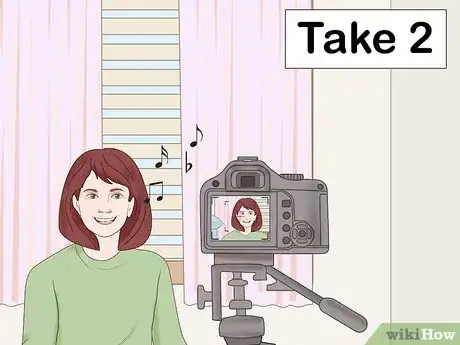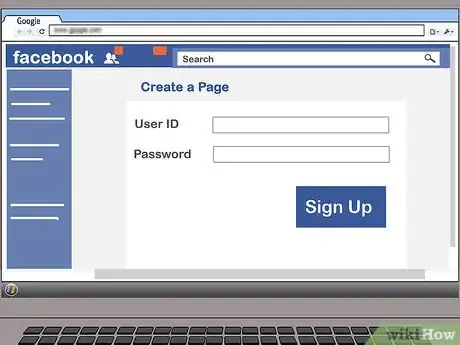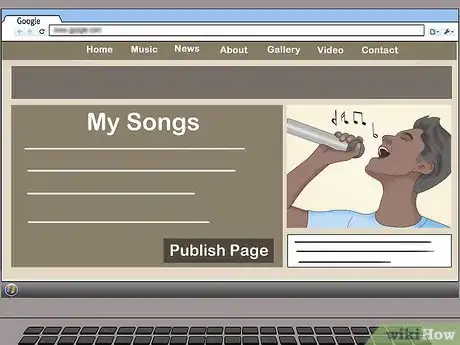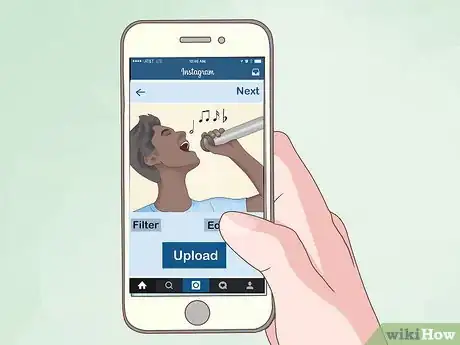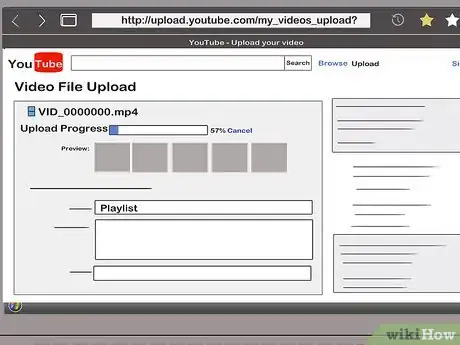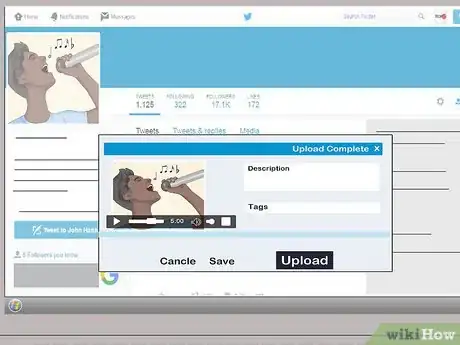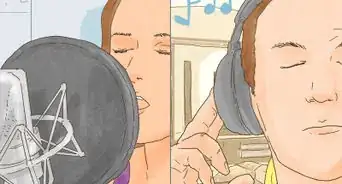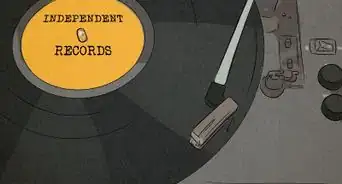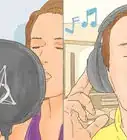This article was co-authored by Tanisha Hall. Tanisha Hall is a Vocal Coach and the Founder and Executive Director of White Hall Arts Academy, Inc. an organization based in Los Angeles, California that offers a multi-level curriculum focused on fundamental skills, technique, composition, theory, artistry, and performance at a conservatory level. Ms. Hall's current and previous students include Galimatias, Sanai Victoria, Ant Clemons, and Paloma Ford. She earned a BA in Music from the Berklee College of Music in 1998 and was a recipient of the Music Business Management Achievement Award.
wikiHow marks an article as reader-approved once it receives enough positive feedback. In this case, 98% of readers who voted found the article helpful, earning it our reader-approved status.
This article has been viewed 71,295 times.
A lot of famous singers you might listen to now got their start by singing on the internet. To become a famous singer on the internet yourself, start by getting your singing voice ready. Figure out what voice type you have, practice your songs, and study other singers. When you’re ready to record your music, decide on your accompaniment and whether you’ll do an audio or video file. Finally, once you’re happy with your files, upload them to the internet and promote them!
Steps
Getting Your Singing Voice Ready
-
1Play the piano to test your voice if you can. One of the keys to becoming a singer is singing songs – and notes – that don’t strain your voice and that you can reach relatively easily. What voice type you are depends on what range of notes you are most comfortable singing. If you play piano, you can play the notes of the scale and sing along.
- You can find piano note diagrams on the internet that can help you find the notes of the scales you need.
- Middle C can be found by looking at the black keys on a piano. Beginning at the very left of the keyboard, count each set of three black keys that are together. The white key to the left of the first black key in the fifth set is middle C.
- Sopranos can sing the notes B3 (one note below middle C) to C6 (high C) in the treble clef scale. You might be able to sing slightly lower notes or slightly higher, but if you’re most comfortable in this range, you’re a soprano.
- Mezzo-sopranos can sing from G3 (two notes below middle C) to A5 (two notes below high C). As with sopranos, you might be able to sing slightly higher or slightly lower notes, but if you’re a mezzo, this is your most comfortable range.
- Altos can sing from E3 to F5.
- Tenors sing from C3 to B4 in the bass clef scale.
- Baritones are most comfortable between G2 and G4 on the bass clef scale covering more than one octave.
- Bass singers can sing the scale between D2 and E4 on the bass clef scale.
-
2Listen to scales on YouTube to test your voice. If you can't play piano, you can search for YouTube videos with scales you can sing along to. If you feel your vocal chords straining to hit any notes, or if you can tell you're not singing the same notes that are being played, you're probably not the voice type that should sing that scale.Advertisement
-
3Warm up your voice. Warm up for 10 to 15 minutes with a few scales and some of your favorite simple songs (think lullabies). Warming up literally warms up your vocal chords, which makes it easier for you to reach more difficult notes.[1]
- You can also find good warm up songs on websites like Total Choir Resources. They're short, simple songs that are easy to learn and are good for all voice types.
-
4Practice your songs. Once you're nice and warmed up, break down the song you’re practicing into sections. You can practice each verse and chorus at a time, or each section of the song. Once you’ve gone through each part a few times, sing the whole song together.[2]
- Avoid singing the song all the way through until the end of your practice session. Otherwise, you might go on autopilot and not really pay attention to what you’re doing.
- Pay attention to everything about each section you practice. Learn the melody well, but think about the lyrics, too. Make sure you really have your own understanding of what you’re singing.
-
5Stretch your vocal range. While you're warming up each practice session, add one new note to your scales. This can either be at the bottom end of your range or the top end. You don't have to hold the note, just focus on hitting it clearly, without your voice breaking.
-
6Use proper technique. The position of your body, your larynx, and your tongue all affect how you sing. Stand up straight, with your shoulders back. Rest your tongue on the top of your teeth and relax your larynx so that your throat feels relaxed. Make sure you breathe from your diaphragm. When you're practicing new notes or new songs, substitute rounded, open vowels like an "oo" or "ee" for your lyrics until you have the notes down.
-
7Study other singers. Once you know what voice type you have, look up singers with your same type. Study their music. What do they do in their songs that makes them sound so good? How do they interpret lyrics? When do they use high notes and when do they hold back? Studying other singers can help you become a better singer yourself.[3]
- A great way to study other singers is by singing along with them. It can help improve your tone and technique.
Getting Your Songs Ready
-
1Choose your accompaniment. Before you record a song, you’ll need to decide where your musical accompaniment is going to come from. If you play an instrument like guitar or piano, you can accompany yourself. Otherwise, you’ll need to find instrument-only tracks. YouTube is a great resource for those types of tracks. Just type in the name of the song you want to sing, followed by “karaoke track.”
- If you like one singer’s particular style of singing, you can type the name of the song, followed by “karaoke, in the style of” and then the artist’s name.
-
2Record an audio file if you're nervous about people seeing you. If you prefer to only let your audience hear your voice while you sing, record an audio file of yourself singing. Using an audio file can also help a new audience focus on your voice, rather than your looks. You can use software that already comes on your computer to record the file.[4]
- Almost all computers come with QuickTime Player, whether you have a Mac or PC. Open QuickTime, and choose “New Audio Recording” from the “File” menu at the top of the screen. A pop-up screen will appear, with a large red dot in the middle. When you’re ready to record, press the dot.
- If you’re using YouTube for background vocals, start the recording through QuickTime and then open the screen for YouTube and begin the video you want to use.
-
3Record a video of yourself singing if you're ready to put out the full package. If you're ready to start performing in public, post video files of you singing. Your audience will be able to see that you have a stage presence and can connect with them. Most computers come preloaded with video recording software.[5]
- Choose “New Video Recording” from the Quicktime “File” menu at the top of the screen. A screen that shows your face will pop up and you can begin recording.
- If you’re using YouTube for background vocals, start the QuickTime recording and then begin the YouTube video you want to use.
- It's up to you how you want your video to look. You should at least make the effort to look nice - do your hair, wear makeup if you like, and wear a nice outfit.
-
4Listen to or watch the files. Once you’ve finished recording your vocal, give it a watch or a listen! The nice thing about uploading your own music is that you only have to upload the stuff you’re very happy with. Take notes about what works in the video and what you'd like to change.
-
5Rerecord your files as necessary. If you're unhappy with your file in any way, that's okay! Look for things like the wrong notes, places where maybe you aren't connecting with the lyrics, or where you look and sound distracted. You won't have to necessarily rerecord the whole thing. If you have editing software on your computer, you can just rerecord the parts you're unhappy with.
Promoting Your Music
-
1Start professional social media accounts. If you want to be taken seriously as a singer, start a professional online social media presence. Facebook, Instagram, and YouTube are all places where you can upload your clips and start a following. Make sure the only things you post are related to your music career.
- Use the name you want to be known by in your career. This might just be your first name, or your first and middle. Whatever you want to be known by is fine.
- Choose a good photo. You want your photo to demonstrate the persona you want to have as a singer, but not be too over the top. You can always opt for a photo of yourself performing (if you have one) or a simple headshot.
-
2Build a website. If you want to take things a step further, you can build yourself a professional website. This can be especially useful if you plan to eventually allow bookings or media requests. You can build a free website by using a host platform like Word Press.
- Make sure you include contact information. You might want to set up a separate email address for contact about your singing.
- You should also create a page to upload your singing clips.
-
3Upload your clips to Facebook to share with family and friends. Once you have files ready to go, start sharing them. open your Facebook page to the main newsfeed. Under the text box that pops up, you’ll see a small green icon that says “Photo/Video” next to it. Click this to bring up a box that lets you choose a file from your computer. Choose the file, then click “Post.”[6]
- To get more people to see your Facebook post, tag your friends and family in it! Not only will they see it, but their friends will see it, too.
- When your write your post, say something like "Hey everyone! I'm getting serious about my online musical presence! Take a listen to my video/audio file and let me know what you think. If you like it, feel free to share it!"
-
4Upload your files to Instagram to reach the general public. To upload to Instagram, you’ll have to add a step or two. You can’t upload photos or videos directly from your computer. Instead, email the clip to yourself, then open the email on your phone. Save the video to your phone and then open the Instagram app, press the camera icon, and choose the video from your phone’s library.[7]
- Use hashtags when you post to Instagram to get people to see your post when they're searching. Use the hashtags "#singer" "#newmusic" "#newartist" as well as hashtags with the song titles.
-
5Upload your videos to YouTube. Sign into your YouTube account. Then choose the icon of the arrow pointing up, next to your account picture. Then you can either drag your file to the screen, or click the screen to open a browsing screen to choose a file from your computer.[8]
- You can share the link to your YouTube video on all of your social media platforms. Copy the link in your browser and share it as a status update on Facebook, a Tweet on Twitter, or a post on Instagram.
-
6Share your posts on Twitter. Unfortunately, you can't upload audio or video files directly to Twitter. But you can use it to link your followers to where you've shared your files on other social media accounts. Copy the url for the original posts on your other social media platforms and paste them into a tweet.
- You can also use your Twitter account to share music you like, link to concerts you’re interested in, and generally share music-related information.
Expert Q&A
-
QuestionHow do I start a singing career?
 Tanisha HallTanisha Hall is a Vocal Coach and the Founder and Executive Director of White Hall Arts Academy, Inc. an organization based in Los Angeles, California that offers a multi-level curriculum focused on fundamental skills, technique, composition, theory, artistry, and performance at a conservatory level. Ms. Hall's current and previous students include Galimatias, Sanai Victoria, Ant Clemons, and Paloma Ford. She earned a BA in Music from the Berklee College of Music in 1998 and was a recipient of the Music Business Management Achievement Award.
Tanisha HallTanisha Hall is a Vocal Coach and the Founder and Executive Director of White Hall Arts Academy, Inc. an organization based in Los Angeles, California that offers a multi-level curriculum focused on fundamental skills, technique, composition, theory, artistry, and performance at a conservatory level. Ms. Hall's current and previous students include Galimatias, Sanai Victoria, Ant Clemons, and Paloma Ford. She earned a BA in Music from the Berklee College of Music in 1998 and was a recipient of the Music Business Management Achievement Award.
Vocal Coach Try figuring out your range first! One way you can test your range is to sing like a Disney princess if you're female or a pop singer like Ed Sheeran or Justin Bieber if you're male. If you can easily sing like they do, you're probably a 1st soprano (female) or a tenor (male). If you struggle with some of the higher notes, you're probably a mezzo-soprano or a 2nd tenor. If you can't really sing along, you might be an alto or a baritone. If your voice shines on the really low notes, you might be a contralto or a base.
Try figuring out your range first! One way you can test your range is to sing like a Disney princess if you're female or a pop singer like Ed Sheeran or Justin Bieber if you're male. If you can easily sing like they do, you're probably a 1st soprano (female) or a tenor (male). If you struggle with some of the higher notes, you're probably a mezzo-soprano or a 2nd tenor. If you can't really sing along, you might be an alto or a baritone. If your voice shines on the really low notes, you might be a contralto or a base. -
QuestionWhat if I am not good at writing songs?
 Community AnswerFind someone who is a good songwriter to write them for you! Or you could search online marketplaces like Fiverr for original songs you like and buy them.
Community AnswerFind someone who is a good songwriter to write them for you! Or you could search online marketplaces like Fiverr for original songs you like and buy them. -
QuestionWill it matter if I only post a recording without a video on YouTube, meaning that I want my voice to be heard instead of showing off my (not so good) looks or acrobatic skills?
 Community AnswerA good music video makes a song, in my opinion, and is perhaps crucial. If you are uncomfortable with being in a music video, combine a bunch of nature shots or find people who you could feature in your video.
Community AnswerA good music video makes a song, in my opinion, and is perhaps crucial. If you are uncomfortable with being in a music video, combine a bunch of nature shots or find people who you could feature in your video.
Warnings
- Don't forget that there will also be a lot of people with negative comments. Try to ignore them.⧼thumbs_response⧽
References
- ↑ http://www.askavocalcoach.com/articles/how-to-improve-singing-with-practice/
- ↑ http://www.askavocalcoach.com/articles/how-to-improve-singing-with-practice/
- ↑ http://blog.sonicbids.com/why-imitating-other-singers-can-help-you-find-your-own-voice
- ↑ http://etc.usf.edu/techease/4all/getting-started/creating-screen-recordings-with-quicktime-player/
- ↑ http://etc.usf.edu/techease/4all/getting-started/creating-screen-recordings-with-quicktime-player/
- ↑ https://www.facebook.com/help/166707406722029?helpref=about_content
- ↑ http://www.multipelife.com/upload-video-to-instagram.html
- ↑ https://support.google.com/youtube/answer/57407?co=GENIE.Platform%3DDesktop&hl=en
